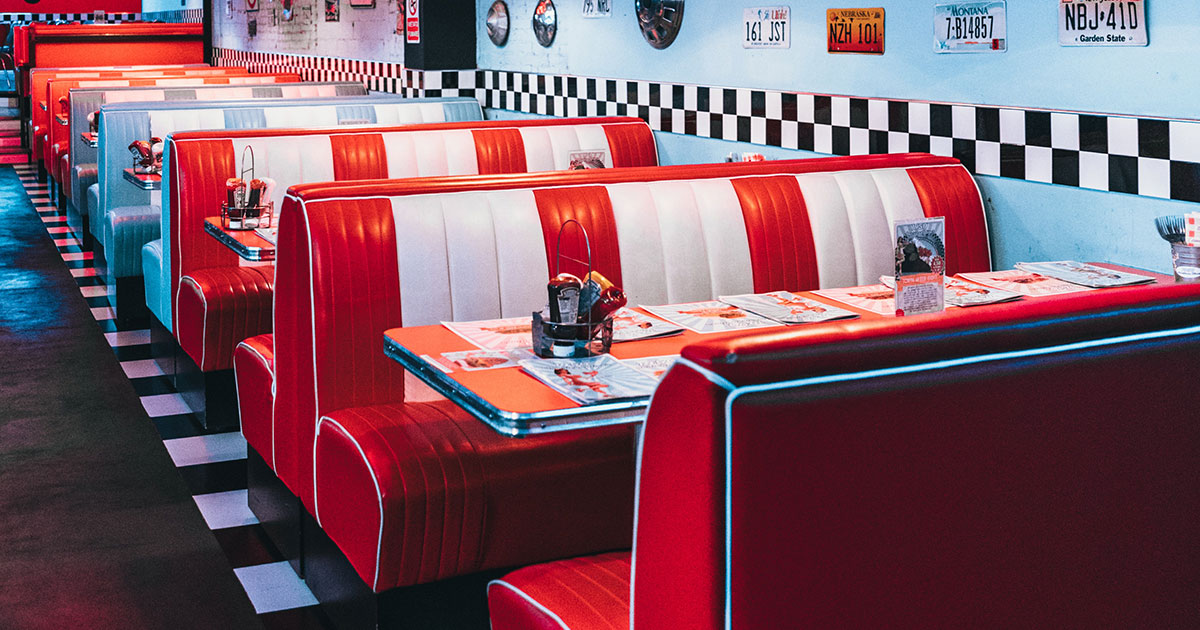The weather outside is frightful.
What luck that in the midst of snowstorms and cold winds, as our friends in America know all too well during the winter season, there's also plenty to do indoors by the crackling fireplace. Writing the wishlist for Santa Claus or sending out invitations to holiday dinners, for example. But after the letter is finished, the important question arises: How should one send it and get a response, when it's blustery and stormy outside?
The solution is the mailbox.
An Icon of American Lifestyle
The Curbside Mailbox is an icon of the American lifestyle like few others. Not surprisingly, considering how closely it's tied to the history of the United States. Benjamin Franklin himself played a role in establishing the American postal system, thus laying the groundwork for the use of these iconic metal boxes.
Nevertheless, it took some time for the design that is now practically unimaginable from the streetsides of American suburbs and small towns to gain popularity across the nation. Until the mid-19th century, Americans didn't have the luxury of mail delivery to their doorsteps; they had to pick up their mail from central post offices. In 1863, the United States Postal Service (USPS) slowly began delivering mail directly to households in major cities. However, even here, the concept of mailboxes was absent. Mail carriers had to ring the doorbell and wait until the letters could be personally handed over to the recipients. A cumbersome and often time-consuming process, where postal workers spent an estimated hour and a half per day waiting at closed doors.
The USPS quickly recognized this challenge, and with the increasing number of cities with mail delivery, a solution was urgently needed. The first design for the American mailbox was patented in 1892 and was in essence not much more than a slot with an attached box to catch the inserted letters – a far cry from today's mailboxes.
Progress was quicker with the development of collection boxes for outgoing mail. While in small communities, Curbside Boxes are still often used both for receiving and sending mail, as early as 1858 the first central collection boxes were installed in large cities. These collection boxes were designed by Albert Potts, whose company also produced street lamps. The collection box was integrated into these lampposts and consequently quite small, which required frequent emptying, leading to the switch to standalone mailboxes that we know today during the 1890s.
Although the large-scale implementation was new, the idea of this centralized mail collection system was not. Over 200 years earlier, the Frenchman Renouard De Valayer tested a, unfortunately short-lived, system under the same principle in Paris.
What many may not know: the iconic mailbox even has an official name. The "Joroleman Box", named after its inventor Roy J. Joroleman and patented in 1915, is characterized by its iconic shape with a flat, rectangular base and a curved top.
The iconic design of the box with its curved body is not only pleasing to the eye but also serves a very pragmatic purpose, especially during the cold season. The rounded top ensures that accumulated snow slides off the box automatically once it reaches a certain amount, instead of causing it to collapse under its weight sooner or later.
Even the height of the posts on which the mailboxes were mounted was and still is designed for efficiency. Initially, it was exactly the seating height of the mail carrier on their horse-drawn carriage, allowing them to open the mailbox and insert the mail without dismounting. Today, this feature has been adapted, allowing mail carriers to deposit letters with a simple reach out of the car window of their delivery vehicles and continue to the next house.
Another fundamental element of Joroleman's design is the iconic flag on the side of the mailbox. When raised, it informs recipients and mail carriers whether there's mail inside the box. This is a useful feature, especially on snowy days when you'd rather not go outside in vain.
The design was so successful and efficient for the work of mail carriers that the Post Office Department of the US government mandated every household and business to install their own mailbox by law until 1923, and even adjusted the design of central collection boxes to the basic plan of a square base and curved top.
The reason the current design has become so iconic (in addition to its appealing style) probably lies in its long-standing dominance. In 1915, the USPS established uniform guidelines for the design of curbside mailboxes, which had nationwide applicability. Before this, households often improvised quite sparsely, for example, by repurposing old barrels and similar items into DIY mailboxes. The risks for the mail and sometimes also for the carriers were not negligible. These new, standardized regulations were only relaxed in 1970 to allow alternative designs for official use in public spaces.
If you want to not only protect your mailbox from the elements but also dress it up stylishly, we have practical Mailbox Covers available in various seasonal designs, from autumn scarecrows and friendly snowmen to the classic American flag.
➡️ Buy Mailbox Covers at American Heritage
By the way, if you want to skip the route through the post office and such and deliver your wishlist directly to Santa Claus, you do have that option. However, you should pack some time, bear spray, and warm clothing for it. While there are Santa Claus mailboxes with supposed direct connection to old Saint Nick in the USA as well as in Germany during the Christmas season, the official Santa Claus mailbox is located in its unofficial hometown of Longyearbyen on the Norwegian archipelago of Spitsbergen/Svalbard, just 1,310 km away from the North Pole.
➡️ Buy Welcome Home Mailbox as Christmas Tree Ornament




